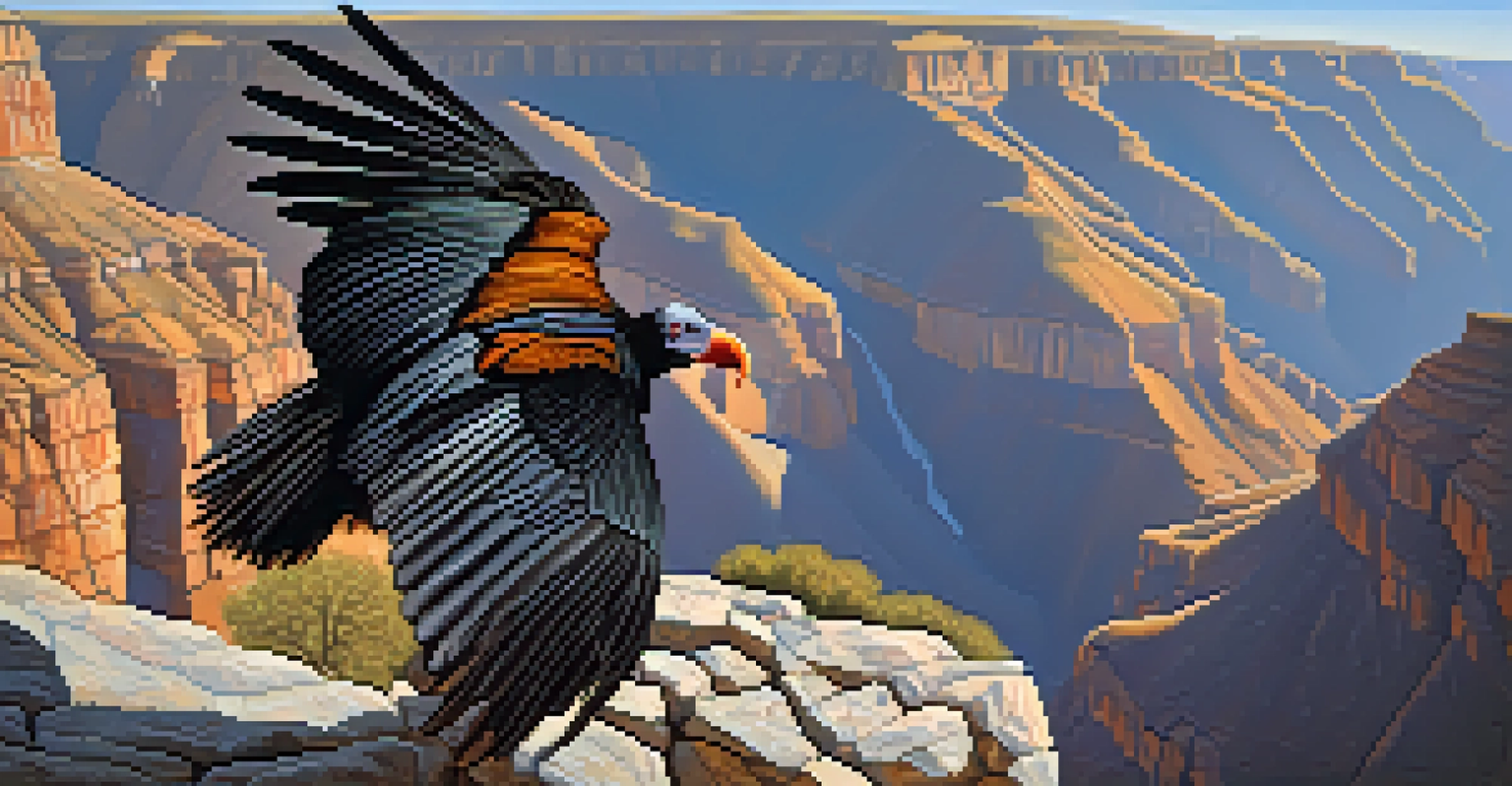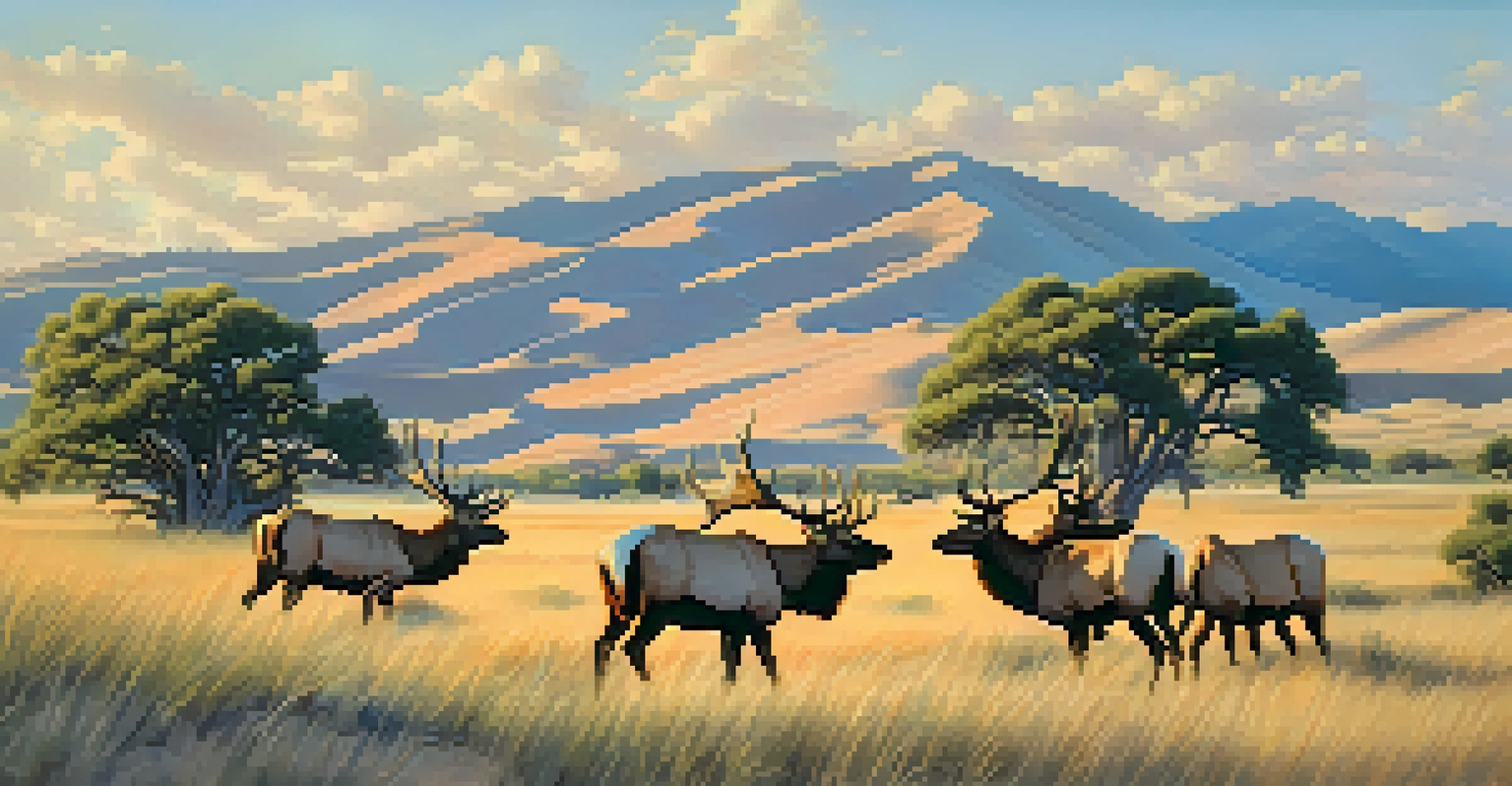The Role of National Parks in Colorado's Wildlife Protection

An Overview of Colorado's National Parks
Colorado is home to an impressive array of national parks, each showcasing the state’s stunning landscapes and diverse ecosystems. From the towering peaks of Rocky Mountain National Park to the desert landscapes of Mesa Verde, these parks are not just beautiful; they're vital habitats for countless species. With over 4 million visitors each year, it's essential to understand the role these parks play in preserving wildlife.
In every walk with nature one receives far more than he seeks.
These national parks serve as sanctuaries for animals that may be struggling to survive in other parts of the state due to habitat loss or human encroachment. By providing protected areas, they ensure that wildlife can thrive without the pressures of urban development. As a result, parks like Great Sand Dunes and Black Canyon of the Gunnison have become crucial refuges for many species.
Moreover, these parks engage in active management and restoration programs aimed at protecting endangered species and their habitats. This proactive approach not only contributes to biodiversity but also fosters an environment where future generations can appreciate the natural beauty of Colorado.
Biodiversity and Ecosystem Balance
National parks in Colorado are home to a rich tapestry of wildlife, from majestic elk to elusive mountain lions. This biodiversity is essential for maintaining ecosystem balance, as each species plays a unique role in its habitat. For instance, predators like wolves help control herbivore populations, which in turn supports the growth of vegetation.

By conserving diverse habitats, these parks ensure that ecosystems remain resilient to changes such as climate fluctuations. This resilience is crucial for the survival of species that rely on specific environmental conditions. Therefore, the protection of national parks directly correlates with the health of Colorado's ecosystems.
Colorado's Parks Protect Wildlife
National parks in Colorado serve as essential sanctuaries for diverse wildlife, helping to preserve their habitats amidst human encroachment.
Furthermore, preserving biodiversity within these parks contributes to scientific research and education. Understanding the interactions between species helps wildlife managers make informed decisions, ultimately leading to more effective conservation strategies.
Threats to Wildlife and Their Habitat
Despite their protected status, national parks in Colorado face numerous threats that can impact wildlife and their habitats. Climate change is one of the most pressing issues, altering weather patterns and affecting the availability of resources like food and water. As temperatures rise, many species are forced to adapt or migrate, disrupting existing ecosystems.
The earth has music for those who listen.
Human activities, such as pollution and illegal hunting, also pose significant threats. The encroachment of urban areas can fragment habitats, making it difficult for wildlife to find food, mates, and shelter. This disruption can lead to decreased populations and even extinction for some vulnerable species.
To combat these threats, national parks implement various management strategies, including habitat restoration and community outreach programs. By raising awareness and involving local communities in conservation efforts, parks can foster a sense of stewardship that benefits both wildlife and people.
Conservation Success Stories
National parks in Colorado have seen numerous conservation successes that highlight the effectiveness of protected areas. For instance, the reintroduction of the gray wolf to Colorado has restored balance to local ecosystems and provided a crucial link in the food chain. This initiative demonstrates how carefully managed wildlife populations can help revitalize habitats.
Another success story involves the recovery of the California condor, which was brought back from the brink of extinction through a collaborative effort among national parks, wildlife agencies, and conservation organizations. By providing safe nesting sites and monitoring populations, these parks have played a vital role in ensuring the survival of this majestic bird.
Biodiversity Supports Ecosystem Health
The rich biodiversity found in Colorado's national parks maintains ecosystem balance, ensuring resilience against environmental changes.
These examples not only inspire further conservation efforts but also show the importance of national parks as safe havens for wildlife. Such success stories remind us of the potential for positive change when we prioritize wildlife protection.
Role of Research and Monitoring
Research and monitoring are critical components of wildlife protection in Colorado's national parks. Scientists and park managers work together to gather data on species populations, health, and habitat conditions. This information is essential for making informed decisions about wildlife management strategies and conservation efforts.
For example, ongoing studies on elk populations help park officials understand their migration patterns and reproductive success. This data is vital for ensuring that management strategies are effective and for adapting to changes in the environment. Monitoring also allows for early detection of potential threats, such as disease outbreaks or invasive species.
Moreover, research conducted in national parks contributes to broader scientific knowledge that can benefit wildlife conservation efforts beyond park boundaries. By sharing findings with other organizations and researchers, parks can help promote effective conservation practices on a larger scale.
Visitor Education and Engagement
Visitor education plays a crucial role in the conservation efforts of Colorado's national parks. By informing visitors about the importance of wildlife protection, parks can foster a deeper appreciation for nature and encourage responsible behavior. Educational programs, ranger-led tours, and interpretive signage help convey these important messages.
Engaging visitors in conservation initiatives can also have a lasting impact. Many parks offer volunteer opportunities, allowing individuals to contribute directly to wildlife protection efforts. Whether it's participating in a habitat restoration project or helping with wildlife monitoring, these experiences can create a sense of ownership and responsibility towards the environment.
Collaborative Conservation Efforts
Future wildlife protection in Colorado relies on collaboration among agencies, communities, and technological advancements to address conservation challenges.
Ultimately, when visitors understand the delicate balance of ecosystems and the challenges wildlife face, they are more likely to support conservation initiatives. This collective effort is vital for ensuring the future of Colorado's diverse wildlife.
The Future of Wildlife Protection in National Parks
As we look ahead, the future of wildlife protection in Colorado's national parks will rely on continued collaboration among various stakeholders. This includes federal and state agencies, conservation organizations, and local communities working together towards common goals. By fostering partnerships, everyone can contribute to creating a sustainable future for wildlife.
Technological advancements also present new opportunities for enhancing wildlife protection. Tools such as remote sensing and camera traps allow researchers to monitor animal movements and behaviors more effectively. These innovations can lead to more precise management strategies that adapt to the changing needs of wildlife.

In conclusion, the role of national parks in Colorado's wildlife protection is more important than ever. By continuing to prioritize conservation efforts, we can ensure that these natural treasures remain safe havens for wildlife and continue to inspire future generations.